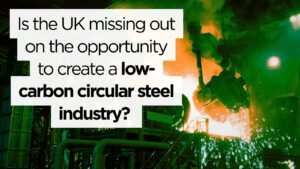The Environmental Services Association (ESA) has published a new guide to boost the development of district heating networks connected to energy-from-waste (EfW) facilities across the United Kingdom.
A third of all UK carbon emissions arise through the way we heat our homes and businesses. Heat generated as a by-product of industrial processes and transported through district heat networks, can provide a low-carbon and cost-effective source of domestic and commercial heating, yet this source of energy is currently chronically underused in the United Kingdom – serving less than three per cent of heat demand nationally.
Energy-from-Waste (EfW) facilities serve a vital public function by using the waste left over after recycling to create electrical energy – generating significant quantities of heat in the process. They subsequently offer a reliable low-carbon source of heat, but only 12 of the UK fleet of circa 60 plants currently export heat at scale.
Furthermore, studies suggest that heat-network connected households could save between £4,000 and £22,000 over 25 years compared with conventional systems, particularly in dense urban areas where EfW networks are most effective.
The ESA’s report, entitled Energy-from-Waste Heat Networks – A Guide to Heat Offtake explains how EfW plants work and details the development process – from assessing waste demand to securing contracts, planning permission, and environmental permits. It sets out the benefits of EfW heat networks and provides checklists of the information required to facilitate development for both the EfW operator and network developer respectively.
Going one step further, the ESA has also produced an interactive online Heat Network Prospectus which plots EfW facilities on a UK map and allows users to access critical information about the heat potential of each facilities, as well as the relevant contact information.
Despite the advantages of EfW heat networks, several barriers remain to delivery. These include high upfront infrastructure costs; uncertain heat demand; complex contractual arrangements, and public misconceptions about EfW’s environmental impact. To overcome these, the guide promotes collaboration between operators, developers, and local authorities, aided by government initiatives like heat network zoning.
ESA Head of Climate and Energy Policy, Charlotte Rule, said: “In a world where extreme weather events are becoming common, and with energy prices expected to remain high, it is clear that our energy system needs transformational change. Creating a diverse, locally-produced, and environmentally responsible energy system will ensure greater security in the face of future shocks.
With heating accounting for a third of the UK’s total emissions, and energy security under strain, EfW heat networks offer a cost-effective, low-carbon, and resilient solution. The guide published by the ESA today outlines the technical, commercial, and regulatory considerations for developing heat offtake. With coordinated planning and investment, EfW heat networks could significantly reduce emissions and household energy costs while advancing net-zero goals.”




